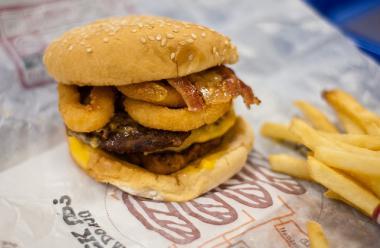From cleaning our teeth in the morning through to the ritual of going to bed, we don't decide everything afresh each day but instead deploy repeated patterns of behaviour without thinking.
We form such habits to relieve our brain - acting on autopilot like this uses significantly less energy.
But how exactly do habits work and how can we use this understanding to best effect in marketing?
Let’s first consider the cue and the reward which motivate the behaviour.
Cues are perceptible triggers in the environment (e.g. beeping mobile phone), situations (e.g. times of day, places) or even moods (tiredness, boredom), that actuate certain behaviour. Without these cues, the habitual behaviour is not triggered. Thus we find it easy to change behaviour whilst on holiday, but once we return home we quickly fall back into old habits.
Habits form because of the Rewards obtained and experienced due to the behaviour. Only if a previous behaviour was accompanied by some sort of reward are we motivated to behave similarly again. The reward can be physical (e.g. thirst is quenched), or of a psychological (e.g. calming) or social nature (e.g. recognition). The (anticipated) reward is central to the formation of a habit.
Once a habit has been established, the cue alone can be enough to trigger the behaviour, even if no further reward is experienced.
The way habits form and how they are regulated in the brain has only just begun to be more fully understood by scientists over the last few years. However, the main basic principles are well recognised:
- Try new behaviour: Habits are formed when we try new things and the experience is rewarding.
- Form a habit: When we repeat rewarding behaviour, a feedback loop leads to habit formation.
- Anchor it deep in the brain: Once the behaviour sequence is stored, habits can be reactivated at any time.
Habits not only determine many of our actions in everyday life, they are also the basis for many of our buying decisions, in particular for purchases that are regularly repeated, offering relieving and efficient ways to gain the desired reward.
For fast moving consumer goods, the cues that are linked to habits are often the elements of the packaging, e.g. the colours, a visual, or the shape of a product. For product design and development it is thus imperative to know which cues on the packaging trigger the habituated act of buying and to retain these.
Furthermore, there are similar consequences for advertising: the cues for activation of the habit should be adequately dramatised in communications in order to support the habit loop. Through recognition of such a central cue, advertising can become more efficient and support the activation of habituated purchasing at the point of sale.
The following aspects should also be taken into account to maximise habitual effects in marketing practice:
- Focus on behaviour: the perspective of habits puts the focus on the behaviour of customers. How often is the product used? Who uses the product? In what context is the product used? How many individual actions must the customer make in order to use the product? The more actions there are, the more demanding is the formation of a habit and the more important a precise analysis of customer behaviour. Our communications should then aim to form new habits and/or strengthen existing ones.
- For innovations in particular it can be a great help to understand whether, or to what extent, a new offering could be integrated into existing habits and, if not, how the formation of a new habit could be guaranteed and supported. We must understand the habit loop in particular – the triggering cue, the routine or sequence of behaviour and the reward that motivates.
- The perspective of habit is also very valuable for many digital products, services and communications, particularly as many have themselves become a part of our habits. Most digital platforms – e.g. Google, Facebook – are successful because, in part, they perfectly match the way in which the brain forms automatisms and habits. There is usually a triggering incentive (e.g. push message from an app; desire for change), which activates a routine (take out mobile phone, activate app, enter search term in Google) and is accompanied by a reward (read message, feeling of being close to others, etc.).
Newsletter
Enjoy this? Get more.
Our monthly newsletter, The Edit, curates the very best of our latest content including articles, podcasts, video.
Become a member
Not a member yet?
Now it's time for you and your team to get involved. Get access to world-class events, exclusive publications, professional development, partner discounts and the chance to grow your network.

